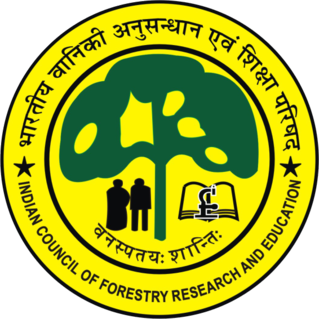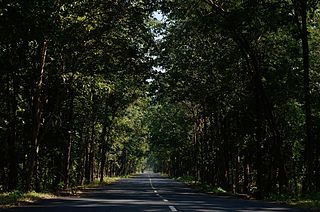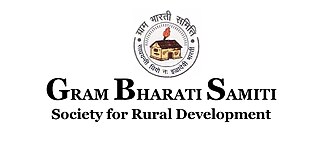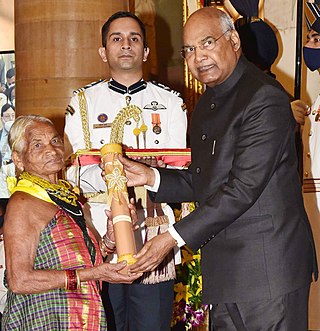Related Research Articles

The Indian Council of Forestry Research and Education (ICFRE) is an autonomous organisation or governmental agency under the MoEFCC, Government of India. Headquartered in Dehradun, its functions are to conduct forestry research; transfer the technologies developed to the states of India and other user agencies; and to impart forestry education. The council has 9 research institutes and 4 advanced centres to cater to the research needs of different bio-geographical regions. These are located at Dehradun, Shimla, Ranchi, Jorhat, Jabalpur, Jodhpur, Bengaluru, Coimbatore, Prayagraj, Chhindwara, Aizawl, Hyderabad and Agartala. It's also the administrator and implementor of India's Green Credits Program.

Sugathakumari was an Indian poet and activist, who was at the forefront of environmental and feminist movements in Kerala, India.

The Ministry of Environment, Forest and Climate Change (MoEFCC) is an Indian government ministry. The ministry portfolio is currently held by Bhupender Yadav, Union Minister of Environment, Forest and Climate Change.

Social forestry is the management and protection of forests and afforestation of barren and deforested lands with the purpose of helping environmental, social and rural development. The term social forestry was first used in 1976 by The National Commission on Agriculture, when the government of India aimed to reduce pressure on forests by planting trees on all unused and fallow lands. It was intended as a democratic approach to forest conservation and usage, maximizing land utilization for multiple purposes.

A "Common Important Forest" in India is a forest governed by local communities in a way compatible with sustainable development. Such forests are typically called village forests or panchayat forests, reflecting the fact that the administration and resource use of the forest occurs at the village and panchayat levels. Hamlets, villages and communities of villages may actually administer such a forest. Such community forests are usually administered by a locally elected body, usually called the Forest Protection Committee, Village Forest Committee or the Village Forest Institution. Such committees are known as Van Panchayats in the Kumaon Division of Uttarakhand, Forest Co-operative Societies in Himachal Pradesh and Van Samrakshan Samitis in Andhra Pradesh. Legislation pertaining to communal forests varies from state to state, but typically the state government retains some administrative control over matters like staff appointment, and penalization of offenders. Such forests typically conform to the IUCN Category VI Protected Areas, but protection may be enforced by the local communities or the government depending on local legislation. Maharashtra is the state with the most forest land while Haryana has the least.

Forestry in India is a significant rural industry and a major environmental resource. India is one of the ten most forest-rich countries of the world. Together, India and 9 other countries account for 67 percent of the total forest area of the world. India's forest cover grew at 0.20% annually over 1990–2000, and has grown at the rate of 0.7% per year over 2000–2010, after decades where forest degradation was a matter of serious concern.

The Singareni Collieries Company Limited or SCCL is a government-owned-coal mining corporation in India. It is under the ownership of Department of Energy, Government of Telangana. The Union Government's administration of the company is through the 49% ownership held by Ministry of Coal. SCCL is currently operating 40 mines where 18 opencast and 22 underground mines in 6 districts of Telangana with a manpower around 39,856 as of November 2023. SCCL is contributing 9.2% in the all India Domestic Production. Since inception (1889) 1.36 BT of Coal is extracted by SCCL and it has proved reserves of 10.84 BT.

Gram Bharati Samiti (GBS) or Society for Rural Development is an Indian non-governmental organisation working in the Jaipur district of Rajasthan with the aim of "establishing a society based on humanitarian, democratic values and ecologically balanced habitat".

Conservation in India can be traced to the time of Ashoka, tracing to the Ashoka Pillar Edicts as one of the earliest conservation efforts in the world. Conservation generally refers to the act of carefully and efficiently using natural resources. Conservation efforts begun in India before 5 AD, as efforts are made to have a forest administration. The Ministry of Environment, Forest and Climate Change is the ministry responsible for implementation of environmental and forestry program in India, which include the management of national parks, conservation of flora and fauna of India, and pollution controls.
Vidyaben Shah was an Indian social worker and activist known for her work with children, women and the elderly in India. While she was already serving as Vice-President, she was appointed the first non-officio President of the New Delhi Municipal Council (NDMC) by Prime Minister Indira Gandhi in 1975. She has held several leading positions in the field of social welfare since the 1940s. Vidyaben Shah died at the age of 97 on 19 June 2020 at her residence in Delhi, her son Mihir Shah confirmed the news of Vidyaben Shah death.
Nehru Foundation for Development (NFD) is a charitable trust dedicated to rural development and environment awareness. It was founded by Vikram Sarabhai in 1965. The foundation is dedicated to promoting basic environmental education and thinking on current problems of development at individual and the societal level.

Tulsi Gowda was an Indian environmentalist from Honnali village. She planted more than 30,000 saplings and looked after the nurseries of the Forest Department. Her work has been honoured by the Government of India and other organisations. In 2021, the Government of India awarded her the Padma Shri, the country's fourth highest civilian award. She is known as the "Encyclopedia of the Forest" for her ability to recognise the mother tree of any species of tree.
Van Vigyan Kendra (VVK) or Forest Science Centres (FSC) has been established by Indian Council of Forestry Research and Education (ICFRE) of the Ministry of Environment and Forests, Govt. of India. It intends to help disseminate various technologies developed by farmers, forest based industries and forest research institutes.
Telangana Ku Haritha Hāram is the afforestation program undertaken by the Telangana government. Haritaharam 2015 was officially inaugurated by Telangana State Chief Minister Kalvakuntla Chandrasekhar Rao on 3 July 2015 at Chilukur Balaji Temple. The Telangana Government has designed this program with the objective of planting trees and greening the whole of Telangana. 46 crore saplings were planted in 2016 alone.

Chami Murmu is an Indian environmental activist and is known for planting trees in India. She had planted 2,500,000 trees in India till she was awarded the Nari Shakti Puraskar in 2019.
The National Agroforestry Policy of India is a comprehensive policy framework designed to improve agricultural livelihoods by maximizing agricultural productivity for mitigating climate change. The Government of India launched the policy in February 2014 during the World Congress on Agroforestry, held in Delhi. India became the first country in the world to adopt an agroforestry policy.
The Indira Gandhi Paryavaran Puraskar is an environment award given for contributions in the field of environmental protection. The award was established in 1987 by the Ministry of Environment, Forests, and Climate Change, Government of India. A cash prize, silver lotus trophy, scroll, and a citation are included in the award. The selection of any organization or personality for the award is done by a committee headed by the Vice President of India. In 2008, the award was given to Isha Foundation of Tamil Nadu. This organization has a Guinness world record for planting more than eight lakh saplings in a single day.

Sethuram Gopalrao Neginhal was an Indian forest official and conservationist who is credited with generating the green cover around the Indian city of Bangalore leading to the city being referred to as The Garden City. He was associated with the launch of Project Tiger and led wildlife conservation actions including development of the Bandipur Tiger Reserve. In addition to being an expert on wildlife and plant life he was an awarded wildlife photographer.
Laxman Singh is an Indian social activist and water conservationist from Lapodiya village in Jaipur, Rajasthan, known for his work in water conservation and developing water conservation techniques such as Chauka, which has helped improve the livelihoods of villagers in Rajasthan. He is the founder of non-profit organisation Gram Vikas Nav Yuvak Mandal Lapodiya (GVNML). The Government of India awarded him the Padma Shri for his work in conserving water and protecting the environment.